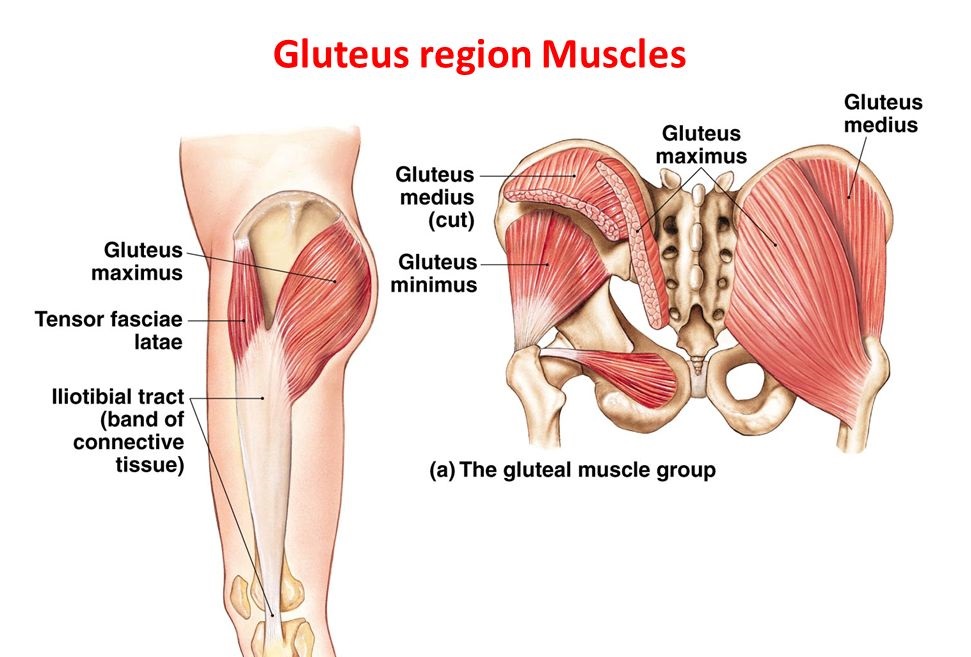What is the gluteus minimus muscle?
The gluteus minimus is a small muscle located deep in the buttocks and is one of the three muscles that make up the gluteal group, the others being the gluteus medius and the gluteus maximus. It is responsible for the abduction, medial rotation and extension of the hip. It also helps to stabilize the hip joint. (1)
Origin, insertion and function
Origin:
The gluteus minimus originates from the outer surface of the ilium bone, just above the posterior gluteal line.
Insertion:
It inserts at the anterior surface of the greater trochanter of the femur.
Function:
The gluteus minimus is responsible for the abduction, medial rotation and extension of the hip. It also helps to stabilize the hip joint and works in concert with the gluteus medius and gluteus maximus muscles to control the position and movement of the hip joint. The gluteus minimus also helps maintain the balance of the pelvis during walking and running.

Common signs of weak gluteus minimus muscles
Signs that your gluteus minimus muscles may be weak include:
- Difficulty standing on one leg
- Knee valgus or “knock knee” during weight-bearing exercises
- Lower back pain
- Hip pain
- Inability to perform exercises such as squats or lunges with proper form
- Inability to maintain proper alignment during walking or running
- Difficulty climbing stairs or uphill
- Anterior pelvic tilt
- Overpronation of the feet
- Weakness in the legs and poor balance.
Exercises that strengthen the gluteus minimus
Exercises that make your gluteus minimus stronger include:
Clamshell exercise:
- Lie on your side with your legs bent at a 90-degree angle and your feet together
- Keep your feet touching while you lift your top knee as high as you can
- Lower your top knee back down
- Repeat for the desired number of repetitions
- Do the same exercise on the opposite side
Fire Hydrant exercise:
- Begin on your hands and knees
- Keep your knee bent, lift one leg up to the side as high as you can
- Lower your leg back down
- Repeat for the desired number of repetitions
- Do the same exercise on the opposite side
Lateral leg raises:
- Stand with your feet hip-width apart
- Lift one leg out to the side as high as you can
- Lower your leg back down
- Repeat for the desired number of repetitions
- Do the same exercise on the opposite side
Step-up exercise:
- Stand in front of a step or bench
- Step up with one foot, bringing the other foot to meet it
- Step down with the same foot
- Repeat for the desired number of repetitions
- Do the same exercise on the opposite side
Single-leg deadlift:
- Stand on one foot
- Hinge forward at the hips and lower your body until your chest is parallel to the floor
- Push through your heel to return to the starting position
- Repeat for the desired number of repetitions
- Do the same exercise on the opposite side
It is important to note that it is important to perform these exercises correctly with proper form and control to get the best results. It is also important to incorporate exercises that target the gluteus minimus in addition to the other muscles in the gluteal group, such as gluteus medius and gluteus maximus, to develop balance and symmetry.
References:
- Greco AJ, Vilella RC. Anatomy, Bony Pelvis and Lower Limb, Gluteus Minimus Muscle. [Updated 2022 May 29]. In: StatPearls [Internet]. Treasure Island (FL): StatPearls Publishing; 2022 Jan-. Available from: https://www.ncbi.nlm.nih.gov/books/NBK556144/
